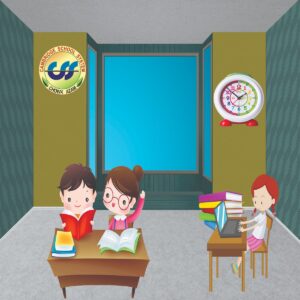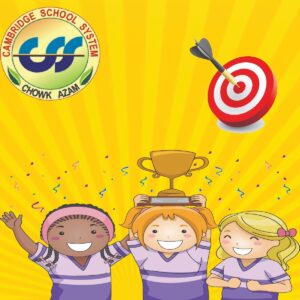Best Classroom Activities
Within the Italian National Curricular Recommendations for primary school and first cycle of learning we can read A feature of practical mathematics is the solving of problems which have to be considered as genuine meaningful questions Best Classroom Activities frequently related to everyday life and not just repetitive exercises or questions to which the children respond simply recalling a procedure or a rule. We read the same advice elsewhere in the documents of the European Community relating to competences, specifically mathematical competence Competences are herein defined as a mix of knowledge skills and attitudes for the context.
Key skills are those which everyone requires for their personal development and well-being active citizenship social inclusion and work Mathematical literacy is the capacity to develop and use mathematical Classroom thinking in an effort to tackle a variety of problems in everyday life. Based on a secure grasp of numeracy there is an emphasis placed on process and activity as well as knowledge. The relationship between in and out of school mathematics is difficult to establish since the two settings are quite different.
Like the case with the practice of mathematics in and out of school Lave 1988 Nunes 1993 that of learning mathematics is also different Resnick 1987. Masingita Davydenko and Pros Wisniewski 1996 presented three major differences Peer Teaching between out of and in school practices purposes of the activity conceptual knowledge and adaptability in coping with constraints. In out of school mathematical practice specifically individuals may generalize procedures in one setting but might not manage to generalize to another as problems will mostly be context specific. Generalization a critical aim in school mathematics is not often a purpose in out of school
mathematics.
Regarding Mathematical Modeling
Mathematical modelling is a vital element of professional preparation which is significantly similar in all fields especially in mathematics education. The use of mathematical Role-Playing, Fishbowl Discussion, Socratic Seminar, Group Discussions, Think-Pair-Share, modelling in mathematics education actually results in creating a learning atmosphere. This necessitates a fresh perspective on the aims teaching mathematics.
The created learning atmosphere is a shape of open classroom practice Ambrosio 2009. There exist differing perspectives of the modeling process coexisting in educational forums. These relate both to observations of the modeling process and perceived constraints and opportunities that exist within specific educational environment.
The phrase mathematical modeling is not only applied to describe a procedure by which a situation must be problematized and understood School Management converted into mathematics solved mathematically translated back again into the original real world situation assessed and conveyed. Aside from this form of modelling which demands that the learner already has at his disposal a minimum of some mathematical tools and models to mathematize there is another form of modelling where model eliciting activities are employed as a means for developing as opposed to applying mathematical Classroom ideas Greer Overstaffed & Mukhopadhyay 2007.
This second kind of modeling is referred to as emergent modeling Grave Meijer 2007 and emphasizes long term learning processes where a model evolves from an informal situated model a model of into a generalizable mathematical structure a model for.
These emergent models are viewed as having their source in activity in and thinking about situations. Here the process of building Academic Performance models is a matter of increasingly reorganizing situations. The model and situation being modelled co evolve and are mutually constituted during the activity of modelling Grave Meijer 2007.
About Problem Posing
It is widely recognized that problem posing is a central part of the mathematics curriculum and indeed is at the very center of mathematical activity English 1998. It is little wonder, therefore, that reports such as those from the Middle School Foreign Languages National Council of Teachers of Mathematics have advocated more focus on problem posing activities in the mathematics classroom. Problem posing and problem solving are interconnected.
As Silver 1994 had posited problem posing may happen before problem solving when problems were being generated from a given situation or after the solution of a problem when experiences in the context of problem solving are changed or transferred to new contexts. Apart from this, problem posing might also happen Classroom during problem solving when the person deliberately changes goals during the course of solving the problem.
As the role of problem posing activities in school mathematics is significant, researchers began to explore several aspects of problem posing processes Silver 1994 Silver and Cai 1996 Leung 1996 English 1998 and 2003 Christou et al. 2005. A number of studies have documented strategies to include problem posing in teaching. Some studies provided evidence that problem posing has a positive influence on students ability to solve word problems and provided a chance to gain insight into students understanding of mathematical concepts and processes.
It was found that students experience in problem posing improves their understanding of the topic offers excellent opportunities for Inquiry-Based Learning children to connect their own passions with every part of their mathematics education and can equip students to be clever consumers.
About Artifacts
Ever since some years ago, our work has been grappling with the following challenging how do we take advantage of the numerical culture that children picked up outside school while not repeating the strengths and weaknesses Classroom characteristic of the typical everyday mathematics and how do we construct improved opportunities for children to learn new insights about underlying mathematical ideas and structures and their possible generalizability so that the emphasis on meaning in everyday life is maintained.
In our design in and out of school mathematics despite their particular differences both in practices and learning processes are not considered to be two disparate and independent wholes. While the specificity of both environments is acknowledged we consider that those conditions which tend to make extra-school learning more efficient Nunes Schliemann D. & Carragher 1994 can and have to be recreated at least to some extent in classroom activities. In fact although Differentiated Instruction there are some differences between the two environments many of the differences can be minimized by establishing classroom situations that foster learning processes more like those emerging from out of school mathematics practice Bonito 2005.
The Basic Features of the Teaching Learning Environment Apart from the employment of appropriate artifacts explained earlier the teaching learning environment established and used in the classroom and across all the studies we have carried out is marked by As for the first point the majority of the lessons have an instructional pattern comprising in the following order of activities in the classroom a brief introduction to the whole class a written individual assignment where the students justify the rationale followed and approach used a concluding whole-class discussion consisting of the clearer and more persuasive explanations that result from the whole class discussion for socialization of the gained knowledge.
At the conclusion of the teaching experiment, the entire class is involved in generating a collaborative text. We find that the interactivity of such Best Classroom Activities instructional methods is crucial due to the prospect of eliciting reflection, as well as cognitive and metacognitive change, amongst students
Results
Our teaching experiments confirm that unlike traditional word problem solving practice children do not disregard the appropriate and reasonable features of reality nor did they leave real world knowledge out of observation and reasoning.
They meet with this type of activity also demonstrate flexibility in their reasoning process by investigating comparing and selecting between strategies Bonito 2003 and 2005. These are generally context and number quantity sensitive Flipped Classroom, Montessori Method, Experiential Learning, Active Learning, Blended Learning , and nearer to the out of school mathematics practice procedures so mathematical reasoning required in additional scholastic environments for instance in workplaces is preferred Bonito & Basso 2001 Bonatti 2003a and 2005. Lastly also creativity and problem critiquing is preferred the children tried to critique and suggest or solve the problems caused by their friends.
Conclusion
In this paper we have reported the findings of some teaching experiments on the basis of the employment of appropriate cultural artifacts, interactive teaching and the implementation of new sociomathematical norms. A focus was put in trying to implement a significantly transformed teaching learning Classroom environment with an emphasis on generating a thoughtful attitude towards real-world mathematical modeling
and problem posing.
The findings indicated that unlike the procedure of conventional word problem solving children did not disregard the pertinent plausible and familiar features of reality nor did they close off real world knowledge from observation and inference. Children were flexible in their reasoning procedures by trying out various strategies generally context Elementary School and quantity-sensitive. Also by asking questions concerning assumptions and arguing the relative superiority of competing strategies the the students and teacher negotiated and created taken as shared meanings regarding the outcomes that were more or That is new norms regarding what constitutes a good or acceptable answer were contested.
The success achieved in our experiments in teaching can be explained through the interdependence of a number of factors a wide application of appropriate artifacts that with their embedded mathematics played a central role in leading students out of school relevant reasoning and experience into play and enabled a satisfactory control of inferences and outcomes the use of a range of complementary integrated and interactive teaching methods introduction of specific socio-mathematical norms that helped play a crucial role in systematic Junior High School attention to the nature of the problems and the classroom environment.




